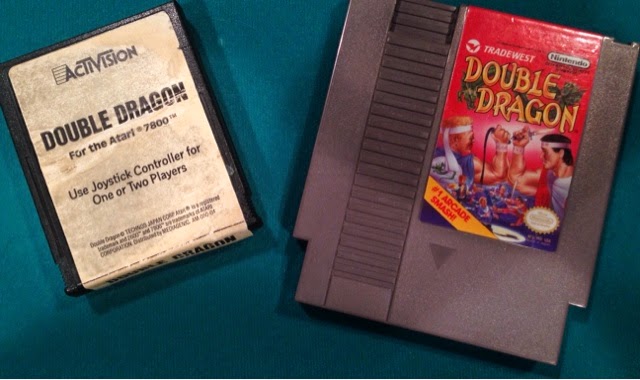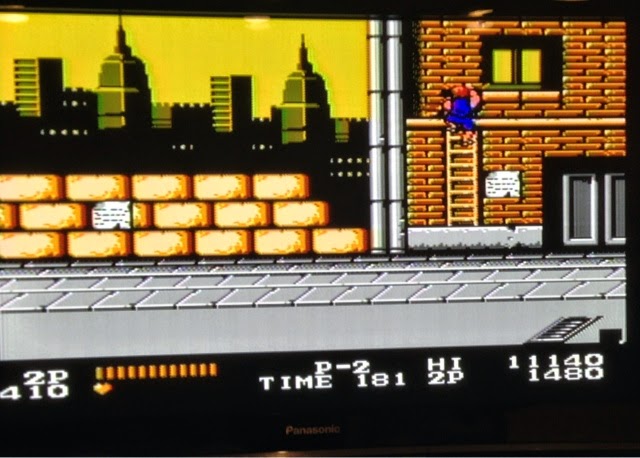The original Double Dragon is probably one of the best examples of an NES classic to have been made by a third party. It was the epitome of a “beat’em up” and inspired many knock offs, and even future games. It wasn’t the first game of its kind, but it did reinvigorate the genre especially on NES.
But, even tough Double Dragon is an NES staple and almost synonymous with the system, doesn’t mean the game only appeared on NES. One of the more interesting places the game would be ported to would be the Atari 2600, thanks to Activision, but even more importantly it would be ported to the Atari 7800 through Activision as well.
Now, if you are unfamiliar with 3rd generation systems, and/or the Atari 7800 let me fill you in on a few details. The Atari 7800 was Atari’s way of trying to stay relevant and competitive against the new wave of gaming systems from Japan such and the NES and Master System. Essentially the 7800 was Atari’s attempt of reincarnating the 5200, but with features closer to the more successful 2600, including backward-compatibility with 2600 games. All this was done while presenting games in a true 8-bit form, except for the 2600 games which weren’t upscaled.
So as an owner of both the NES and the Atari 7800, and of Double Dragon on both systems, it was interesting to compare and contrasts what these 3rd Gen 8-bit systems could do with this game.
One of the main issues I do need to address is that the ports of Double Dragon on the NES and the Atari 7800 where done by different publishers. The Atari 7800 by the afore mentioned Activision, and the NES version by Trade West.
The NES version is as fun as ever. It epitomizes the era of pre-Mortal Kombat fighters, with simple combos, and a cartoon like level violence. With the NES controller, fighting and use of the basic combos is easy, and the game passes by quickly. The characters themselves are stumpy and chubby looking, and look more like cartoon characters, giving the NES version and almost tongue and check appearance. The game music also comes through clear and helps drive your progression.
With the 7800 I can’t help but feel that this is a more accurate port of Double Dragon from the arcade version. The characters aren’t the stumpy chubby little guys from the NES version, but lean realistic looking fighters. Also look at the detail in in the picture above, from the beginning scene. There is an incredible amount of detail in this game, which definitely lets you know the 7800 was on par with other real 8-bit systems in Gen 3. The detail in this version is far better than that on that NES. With the 7800 controller fighting and control is about 1000 times harder and it takes a lot of work just to get past the first few fighters with the odd side buttons on the 7800’s standard controller. Game play itself though is generally a lot tougher in the time it takes you to get through the first level of the 7800 version you could just about be all the way through the NES version. The music on the 7800 is abysmal, although it’s the same in game tune it doesn’t translate well and almost sounds entirely different and barely audible.
To be honest it’s really hard to say which is the better version. I can tell you that I prefer the NES version because of its iconic nature, look, ease of play, and kitschy feel. On the other hand if I was a fan of the arcade version, or just a hard core beat’em up fan I may prefer the 7800 version due to its detailed look, grittiness, and straight forward action. I do have to say though that I think one thing that is a detriment to the 7800 version, isn’t so much anything to do with the game itself, as it is the 7800 joystick controller and the way those right and left side mounted A & B buttons effect game play, and slow things down. Perhaps it was better with the CX-78 controller which was an NES like controller for the 7800, but those are rare in the US.
What I would also have to say is anyone who is a Double Dragon fan has to check out the 7800 version, and give this game a chance. For the rest of us the NES port is the ultimate version, and really gives you that Double Dragon and 8-bit retro fix.




Leave a Reply